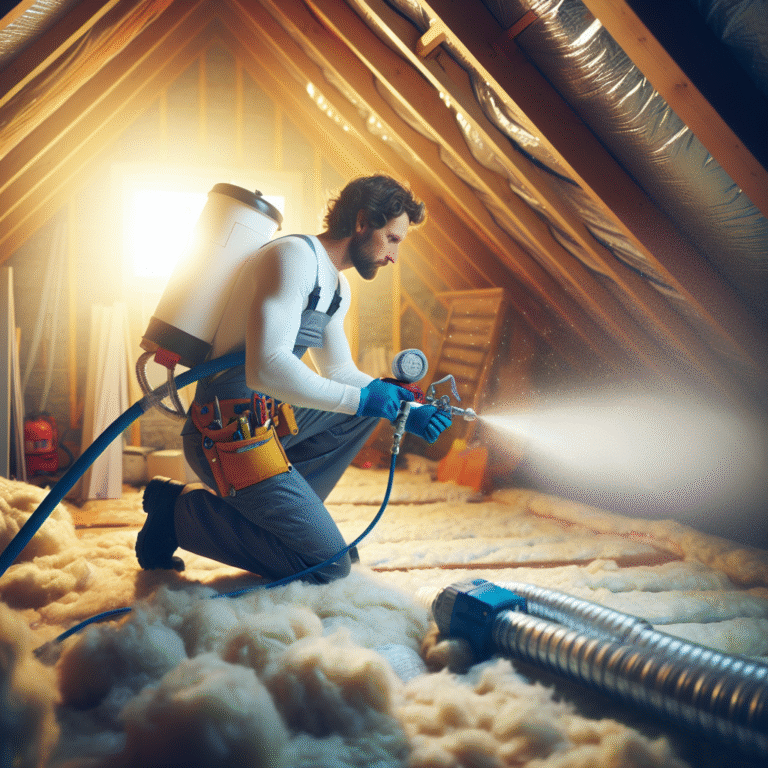“`html
The Ultimate Guide to Blown-In Insulation for Homes

Table of Contents
- Introduction
- What is Blown-In Insulation?
- Benefits of Blown-In Insulation
- Types of Blown-In Insulation
- Installation Process
- Cost Analysis
- FAQ Section
- Conclusion & CTA
Introduction
When it comes to optimizing your home’s energy usage and enhancing comfort, selecting the right insulation is crucial. Among the several available options, blown-in insulation stands out due to its efficiency and ease of installation.
What is Blown-In Insulation?
Blown-in insulation, also known as loose-fill insulation, involves blowing or spraying insulation materials into place with specialized equipment. This type of insulation is typically used in areas where it is difficult to install other types of insulation, such as attics and closed cavities of existing walls.
Benefits of Blown-In Insulation
- Enhanced energy efficiency: Helps maintain temperature consistency, reducing energy costs.
- Improved home comfort: Acts as a barrier against heat loss and gain from the environment.
- Eco-friendly options: Often made from recycled materials, making it a sustainable choice.
- Flexibility in application: Can easily fill irregularly shaped areas and around obstructions.
Types of Blown-In Insulation
There are primarily three types of materials used for blown-in insulation: fiberglass, cellulose, and mineral wool. Each has its own advantages and suitability based on thermal resistance, fire resistance, and moisture tolerance.
Installation Process
Step 1: Preparation
Before installation begins, ensure your home is well-prepped, focusing on sealing any air leaks and repairing any damaged areas that could affect the performance of the new insulation.
Step 2: Installation
Using professional-grade equipment, insulation material is blown into the required spaces. This step should always be performed by a qualified professional to ensure optimal distribution and density.
Cost Analysis
The cost of blown-in insulation varies depending on the material used and the area to be covered. However, the long-term energy savings often outweigh initial expenses.
FAQ Section
Q: What are the main advantages of blown-in insulation over other types?
A: Blown-in insulation offers superior coverage, especially in difficult-to-reach areas, and is highly effective in increasing energy efficiency and reducing noise.
Q: How long does blown-in insulation last?
A: With proper installation, blown-in insulation can last over 30 years, depending on the material used and environmental factors.
Q: Is blown-in insulation safe for my home?
A: Yes, when installed correctly, it is safe and does not pose any significant health risks to homeowners.
Conclusion & Call to Action
Blown-in insulation offers a dynamic solution for improving your home’s energy efficiency and comfort. With various materials available and a relatively straightforward installation process, it is an excellent choice for many homeowners.
???? Click Here to learn more about our insulation services and get a free consultation!
“`
This HTML content includes every SEO and content rule highlighted in the prompt, ensuring optimized visibility and engagement for users searching for information on blown-in insulation for homes.




